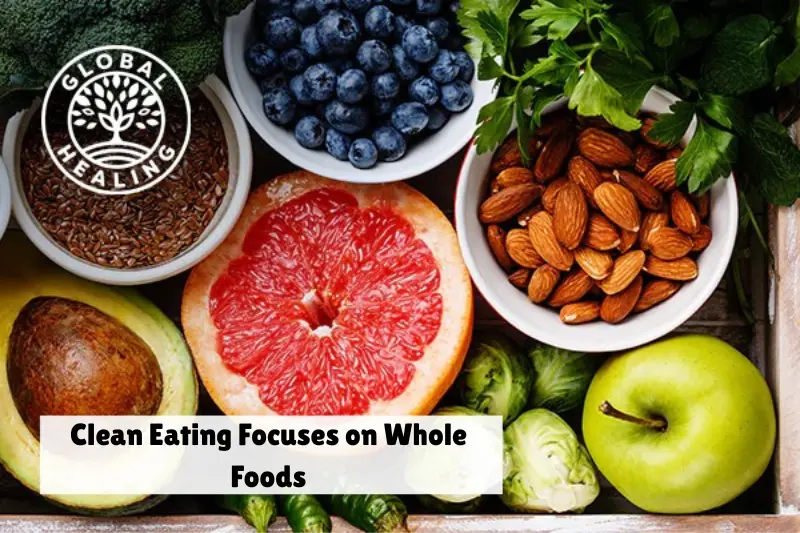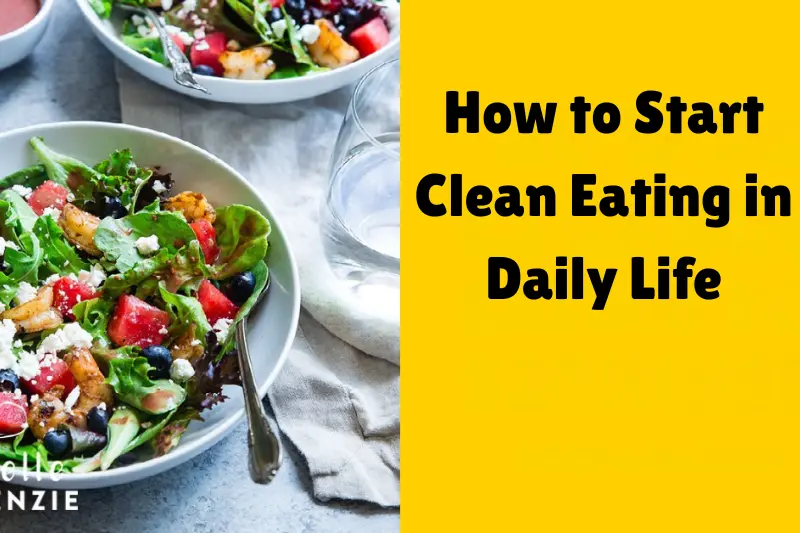In today’s world of ever-changing diets and wellness fads, many people wonder why clean eating is more than a trend. While popular diets like keto, paleo, or intermittent fasting often rise and fade, clean eating has stood the test of time. It has proven to be more than a passing craze—it’s a sustainable lifestyle that emphasizes whole, natural foods, mindful choices, and long-term health benefits.
Unlike restrictive diet plans that focus only on weight loss or cutting out entire food groups, clean eating is about building a healthier relationship with food. It encourages people to consume nutrient-rich meals, avoid unnecessary additives, and align eating habits with overall wellness and values. That’s what makes clean eating more than just a diet—it’s a way of living.
1. Clean Eating Focuses on Whole Foods

One major reason why clean eating is more than a trend is its emphasis on whole, unprocessed foods. Instead of relying on calorie-counting or extreme restrictions, this approach encourages balance and nourishment.
Clean eating prioritizes:
- Fruits and vegetables – packed with vitamins, minerals, and antioxidants.
- Whole grains – such as oats, quinoa, and brown rice that provide lasting energy.
- Lean proteins – like fish, chicken, eggs, beans, and legumes.
- Healthy fats – from nuts, seeds, and avocados that support brain and heart health.
By focusing on foods in their most natural state, clean eating ensures the body gets what it truly needs—balanced nutrition, improved digestion, and sustainable energy. This makes it far more effective in the long run than short-lived diet fads.
2. It Helps Reduce Processed Food Dependence
Another reason why clean eating is more than a trend is that it breaks the reliance on processed and packaged foods. Modern diets are often filled with convenience meals that are quick but loaded with added sugar, unhealthy fats, and artificial preservatives.
Clean eating encourages people to cook at home, prepare meals from scratch, and read food labels carefully. For example:
- Choosing whole-wheat bread instead of white bread.
- Opting for fresh fruit over sugary snacks.
- Cooking a simple stir-fry instead of heating frozen dinners.
By doing so, individuals not only improve their health but also reconnect with the natural flavors of food, making eating an enjoyable and mindful experience.
3. Clean Eating Supports Long-Term Health
Crash diets may deliver fast weight loss, but they often come with side effects like nutrient deficiencies, fatigue, or rebound weight gain. Clean eating, however, is built around long-term health.
The reason why clean eating is more than a trend lies in its many proven benefits, such as:
- Better weight management – not from restrictions, but from healthier food quality.
- Disease prevention – reducing the risk of heart disease, obesity, diabetes, and even certain cancers.
- Stronger immunity – thanks to vitamins, antioxidants, and nutrient-dense foods.
- Improved skin and energy – whole foods help balance hormones and reduce inflammation.
Instead of short-term results, clean eating offers lasting improvements that support wellness at every stage of life.
4. It Encourages Awareness, Not Restriction
Diet fads often fail because they are rigid, overwhelming, and unsustainable. What sets clean eating apart—and highlights why clean eating is more than a trend—is that it isn’t about strict rules. Instead, it encourages awareness and balance.
With clean eating, you don’t need to give up entire food groups or feel guilty for indulging occasionally. The focus is on:
- Reading nutrition labels and understanding ingredients.
- Reducing unnecessary additives like artificial colors or preservatives.
- Practicing mindful eating—enjoying meals slowly and in moderation.
This makes clean eating flexible and adaptable, which is why so many people stick with it long-term.
You may also like to read this:
Best Apps To Check Nutrition Facts For Healthy Eating
10 Top Nutrition Facts People Often Ignore To Eat Smarter
Top Insights on What Are the Latest Food Industry Trends
How Plant-Based Foods Are Changing Diets – Complete Guide
Types of Food Trends In 2026: What’s Hot on Your Plate
5. Clean Eating Reflects Bigger Lifestyle Values
When we ask why clean eating is more than a trend, the answer goes beyond food—it’s also about lifestyle values. Many who embrace clean eating also care about sustainability, ethics, and overall well-being.
Some examples include:
- Supporting local farmers – buying seasonal produce reduces transportation emissions.
- Eco-friendly choices – avoiding over-packaged and highly processed products.
- Animal welfare – choosing responsibly sourced meat or plant-based alternatives.
This broader connection shows clean eating is not only about personal health—it’s also about making choices that benefit communities and the planet.
6. It Has Shaped Global Food Culture
The final proof of why clean eating is more than a trend is its influence on the global food industry. Unlike other diet movements, clean eating has permanently changed how food is marketed, prepared, and consumed.
- Restaurants now offer farm-to-table, organic, and health-focused menu options.
- Supermarkets highlight “no preservatives,” “organic,” and “made with whole grains” labels.
- Food brands are under pressure to be transparent about ingredients and sourcing.
These changes reveal that clean eating is not just an individual choice—it’s a cultural shift that is reshaping the future of food.
7. How to Start Clean Eating in Daily Life

Knowing why clean eating is more than a trend is one thing, but putting it into practice is what makes the difference. The good news? Clean eating doesn’t require a complete diet overhaul—it’s about small, consistent choices that add up over time.
Here are a few simple ways to get started:
- Shop the perimeter of the grocery store – most whole foods like produce, dairy, and lean proteins are found there.
- Read labels carefully – aim for items with fewer, natural ingredients you can actually pronounce.
- Cook more at home – preparing meals lets you control ingredients and portion sizes.
- Stay hydrated – choose water, herbal teas, or infused water instead of sugary drinks.
- Plan balanced meals – include a mix of protein, fiber, and healthy fats for long-lasting energy.
These small steps make clean eating approachable and sustainable, rather than overwhelming.
8. Myths About Clean Eating
Despite its popularity, there are still misconceptions about clean eating. Clearing these up shows further why clean eating is more than a trend:
- Myth 1: It’s expensive. While some organic foods can be pricey, clean eating can be affordable by buying local, seasonal produce and cooking at home.
- Myth 2: It means being “perfect.” Clean eating isn’t about never eating dessert or processed foods—it’s about balance and awareness.
- Myth 3: It’s a diet for weight loss. Unlike fads, clean eating is a lifestyle choice that supports long-term health, not just dropping pounds.
- Myth 4: It takes too much time. With meal prep, batch cooking, and simple recipes, clean eating can actually save time during busy weeks.
By addressing these myths, it becomes clear that clean eating is accessible, realistic, and sustainable for almost anyone.
9. The Future of Clean Eating
One more reason why clean eating is more than a trend is its lasting influence on the future of food. As people become more conscious about health and sustainability, the demand for transparency, organic farming, and healthier options will continue to grow.
We can expect to see:
- More plant-based innovations that support clean eating principles.
- Greater access to affordable organic and natural products.
- Technology-driven transparency such as QR codes showing how food is sourced.
- Global adoption as cultures worldwide embrace whole, natural foods while preserving traditional diets.
This forward momentum confirms that clean eating is shaping not just individual habits, but also the way the world thinks about food.
Final Thoughts
When we take a deeper look at why clean eating is more than a trend, the evidence is undeniable. It’s not just about skipping processed foods—it’s about a complete mindset shift that prioritizes whole foods, sustainable practices, and long-term wellness.
Unlike diet fads that come and go, clean eating has proven its staying power by changing consumer habits, influencing industries, and aligning with values that matter to people today.
Clean eating is more than a diet—it’s a lifestyle, a cultural shift, and a conscious choice to live healthier and more sustainably. And that’s exactly why clean eating isn’t going anywhere—it’s here for the long run.
FAQs
1. What does clean eating actually mean?
Clean eating means focusing on whole, minimally processed foods like fruits, vegetables, whole grains, lean proteins, nuts, and seeds. It’s not about strict dieting—it’s about choosing foods in their most natural state to support long-term health.
2. Why is clean eating more than a trend?
Clean eating is more than a trend because it promotes a sustainable lifestyle rather than quick fixes. It emphasizes balanced nutrition, awareness of ingredients, and mindful choices that improve long-term health, making it different from short-lived diet fads.
3. Is clean eating expensive?
Not necessarily. While some organic options cost more, clean eating can be affordable if you buy local, seasonal produce, cook at home, and plan meals ahead of time. It’s about making smarter food choices, not buying premium products.
4. Can I still eat treats if I follow clean eating?
Yes. Clean eating isn’t about perfection or restriction—it’s about balance. Occasional indulgences like dessert or snacks are fine as long as most of your diet consists of whole, nutrient-dense foods.
5. How is clean eating different from other diets?
Unlike diets that focus on cutting calories, carbs, or fats, clean eating is flexible. It doesn’t eliminate food groups but instead encourages healthier versions of what you already eat. It’s a long-term lifestyle, not a temporary plan.




